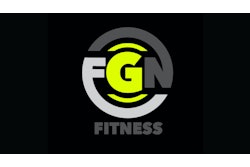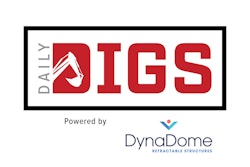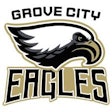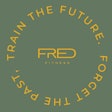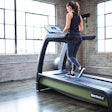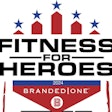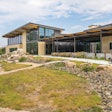Your fitness center can attract an active, older generation of exercisers by using marketing tactics that focus on building relationships and that offer solutions to challenges this group faces.
Traditional marketing tactics are not going to work with the new market majority. For the first time ever, adults 40 years and older make up the biggest percentage of the buying public. According to IHRSA, 35- to 54-year-olds make up the largest majority of fitness center members, and 25 percent of U.S. health club members are 55 and older. The future is a mature market. Marketing campaigns that appeal to the young in hopes they'll remain customers for decades are fruitless. Brand loyalty today is negligible. As health and fitness become increasingly important to the older population, the fitness industry has a golden opportunity. This opportunity will be lost, however, if fitness marketers don't shift their message to one that matches the respect and sincerity that their new target demands. The market and mindset has shifted to "natural and real" beauty, with active, strong, older people as role models. Forty- and 50-somethings are aspiring to age actively and live long and strong. Ads featuring flawless 20- and 30-somethings with unrealistic figures aren't going to endear you to the baby boomers you hope to attract. The goal of marketing is to deliver a message and encourage positive response, defined usually as an inquiry or a purchase. To be effective, it is important to understand the demographics of the target market you currently serve, as well as the one you're trying to reach. It is also important to understand that demographics alone are not enough. Stereotypical predictions regarding baby boomers are not necessarily coming true. While the resounding theme has been that boomers will want to retain their youth, fight aging and feel they "deserve" things through their stages of life, the majority of boomers also value giving back, are seeking spirituality and are attaining more altruistic goals.
Do you know the wants and needs of your specific target market? What do they value? What are the challenges they face? Knowing this, you can provide the solutions. This will lead to development of a message that will elicit a positive response. Regardless of where you do business, with the first of the boomers turning 60 in 2006, one sure target is this market. Seventy-six million baby boomers will turn 60 over the next 20 years. In addition, 40 percent of fitness center members are beginning or intermediate exercisers, many of whom may be in this older group. They will need help getting started and sticking with it. Personal training services will see increasing growth on the horizon for trainers who can relate to this clientele. Increasingly, exercise is being recommended for osteoporosis, hypertension, diabetes and other maladies that affect older adults. If your fitness center can provide the solutions to these challenges, as well as accountability and desirable social interactions, you can thrive as the population grays.
Out-of-the-Box Marketing Examples
To reach the older market, your marketing campaigns should appeal to them, and offer solutions to their problems and concerns. Print ads. Feature an older woman or man busy at her or his hobby whose quote reveals, "I know I need to get more exercise. I just don't know where to begin and I don't want to get hurt." In the ad copy, describe the amenities and services that will solve this challenge. Invite the reader to try services in a risk-free complimentary session or week-free membership. This is both values- and relationship-based marketing. If the service you provide can deliver your promise, your only challenge is getting them in the door. Another ad could read "I am mad. I am mad I didn't start sooner to feel this good." Show an older adult working out in your facility. Follow up with a call to action, such as those just described. Radio. Feature a middle-aged woman describing her busy life, her desire to see her friends and keep a little time to herself. A radio personality then follows with a thorough description of how these desires can be easily met with the services you provide. Presentations. A non-traditional delivery of direct marketing is necessary to connect to a relationship-based segment. First, market a staff person as a speaker. Provide a presentation to a retirement community or country club. Create a handout featuring testimonials of like-minded people. The message can be that self-sufficiency and independence are made possible by the strength gains made through exercise. A key in successful reception of this message is the development of friendships, gained by sending the right person to deliver the message. Cross marketing. Spas and salons attract much the same market as fitness centers. Set up an offer for a complimentary training session to each customer who makes a purchase over $100, for instance. In Sherri McMillan's The Successful Trainer's Guide to Marketing, other examples for cross marketing include sporting goods stores, golf centers and flower shops. For the slow down that occurs after January, a cross marketing effort with a chocolate or jewelry store leading up to Valentine's Day might create the traffic you want. Trade for publicity. Consider writing for a local newspaper or magazine about health and fitness. Create a byline or author description that has your position in the fitness industry and includes your business name. You could also negotiate a trade with a local radio station. Your mission is to provide new information and personal stories, and become the source of fitness information in the area. You also are allowing listeners to get to know you and your business in a non-threatening, relationship-forming way. Co-host with a radio personality who can ensure the show goes smoothly while you include the fitness knowledge and tie-in to your services. Your fitness center could also provide memberships for employees at the station. While the show airs, your business ads could run.Solutions to Challenges
Following are classes and programs you can offer at your fitness center as "solutions" to the "challenges" many older adults face:- Fall prevention programs
- Back Care 101
- Living and Exercising with Diabetes
- Living and Exercising with Osteoporosis
- Living and Exercising with Arthritis
- Golf for Life
- Tennis for Life
- Flexibility and Balance Training



















